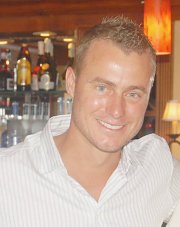The early bird got the surprise.
At 4.45 am on Wednesday, while most of Nassau slept, a passenger bound for Freeport via a Bahamasair flight walked through the automatic doors of Lynden Pindling International Airport’s (LPIA) new domestic and international terminal and into history, becoming the first person to enter the $83.5 million, 105,000 square foot facility as it went live.
#On hand to greet her with a gift package and a broad smile was NAD president and chief executive, Vernice Walkine.
#“It was really fun; an historic moment,” said Ms Walkine. “You could see she was grinning from ear to ear and that says a lot, considering the hour, 4.45 in the morning.”
#While Ms Walkine was at one door, NAD director of terminal operations, Deborah Coleby, was at another, welcoming the next passenger. Bahamasair chairman Valentine Grimes; NAD vice-president of operations, John Terpstra; manager of customer service, John Fowler, and other executives and management were present for what one called “the $83 million moment of truth”.
#“Transforming LPIA took a lot of man hours, and an investment of some $400 million, the largest single infrastructural project ever undertaken in the history of our nation,” Prime Minister Perry Christie said during the ribbon-cutting ceremony. “Across these three stages more than $105 million was awarded to Bahamian contractors, and at the peak of construction some 350 workers were working on site.”
#The result, he said, was a world class airport.
#“Now, with sleek architectural features that take advantage of the natural environment and more than $2 million invested in Bahamian art, the terminals are a beautiful sight to behold and our airport is anything but ordinary,” the Prime Minister added.
#“We now have facilities commensurate with the other world class developments and product offerings on Nassau/Paradise Island and in our far flung Family Islands.”
#NAD said some 2,600 persons are employed directly or indirectly in connection with LPIA.
#Ms Walkine said the new terminal means those travelling to the Family Islands enjoy the same experience as those travelling across the globe. Bahamian-owned carriers now operate out of the same terminal as British Airways and Air Canada, with passengers having access to the same amenities, though waiting areas and gates are separate.
#“We are very excited about what this new terminal represents. We believe that this extraordinary new terminal creates a world class experience with a distinctive Bahamian flair,” said Ms Walkine. “From today on, the overall experience will be equal for passengers whether they are going to Toronto or George Town, London or Long Island.”
Article Credit: Nassau Guardian
R.E. Properties Bahamas Website
Article Credit: Nassau Guardian
R.E. Properties Bahamas Website









